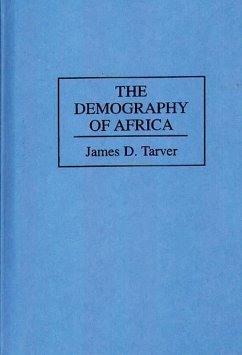Written lucidly and simply to serve as an introduction to the study of the African continent from a human population perspective, this book demonstrates important factors in the ebb and flow of group size and structure using the example of the fastest growing region in the world. From a total original population of less than a quarter million in prehistoric times to the present count of 642 million people in 1990, Africa is now demonstrating an annual growth rate of 3.0%, the highest on the planet. While the rest of the world's population is expected to increase by 60%, Africa's is expected to increase by 100%, doubling by the year 2025 to a projected total of 1.6 billion people. The major factor creating the high growth rate is the drop in death rates while the fertility rates remain high. Stress on the population has been related to urbanization which has increased since African countries attained independence in the 1960s. Employment opportunities in cities are inadequate and slum conditions have appeared around most major cities. Since agriculture remains the major industry and occupation, rural development policies are seen to hold the most promise for stemming urban migration and reducing famine and poverty.









